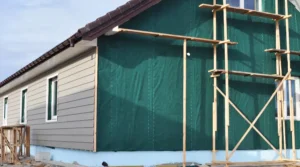When it comes to refreshing your home with paint, knowing the difference between interior painting and exterior painting is more than a matter of location. Each project comes with unique demands, materials, and techniques—and understanding those can help you make smarter choices and avoid costly mistakes. Whether you’re brightening a bedroom or revitalizing curb appeal, this guide will walk you through what you need to know.
The Basics: Why Paint Formulations Matter
The paint used inside your home is very different from what’s used outside—and for good reason.
- Interior paints are designed to withstand cleaning, resist stains, and maintain color under artificial light. They’re made with fewer harsh chemicals, which means they’re safer for enclosed spaces.
- Exterior paints, on the other hand, are built tough. They contain additives that resist mold, mildew, UV rays, and extreme temperature changes. They’re also more flexible to accommodate expansion and contraction from heat and cold.
Choosing the wrong type of paint can lead to poor results. For example, using exterior paint indoors can release higher levels of VOCs (volatile organic compounds), while using interior paint outside will likely result in premature fading, cracking, or peeling.
If you’re unsure, our interior painting and exterior painting experts can help you select the right product for your surfaces and climate.
Prep Work: The Key to a Lasting Finish
Preparation is where many DIYers get tripped up—and where professional painters shine.
Interior Prep Often Includes:
- Moving and covering furniture
- Patching holes or cracks in drywall
- Removing wallpaper or old paint
- Cleaning walls to remove grease or dust
- Applying painter’s tape for clean lines
Exterior Prep Typically Involves:
- Pressure washing surfaces to remove dirt and mildew
- Scraping off flaking paint
- Sanding and priming raw wood
- Sealing cracks or gaps in siding
- Protecting landscaping and outdoor fixtures
Skipping or rushing prep work may save time in the short term, but it drastically reduces the lifespan of the paint job. That’s why our team approaches both exterior painting and interior painting projects with detailed prep plans that ensure clean adhesion and long-lasting results.
Environmental Considerations
Paint reacts to its environment, and the conditions surrounding your project matter more than you might think.
- Exterior painting should only be done when weather conditions are ideal: low humidity, moderate temperatures, and no imminent rain.
- Interior painting can happen year-round, but it’s best to ensure good ventilation. Some newer low- or zero-VOC formulas make this easier and safer, especially in bedrooms or nurseries.
For homeowners looking to update both interior and exterior areas, seasonal planning is key. Spring through early fall is typically best for outdoor work, while interior projects can be comfortably completed during the winter months.
Color Selection: Strategy, Mood, and Light
Color isn’t just aesthetic—it’s strategic. Interior spaces benefit from colors that reflect your personality, support the function of each room, and respond well to indoor lighting. In contrast, exterior colors must work with your home’s architecture, landscaping, and neighborhood guidelines.
Hiring a professional for residential painting ensures you receive a cohesive look inside and out. And if you’re feeling overwhelmed by options, we offer expert color consultations to help you navigate trends, finishes, and lighting variables with confidence.
Durability and Maintenance Expectations
Interior surfaces are generally subject to scuffs, stains, and frequent contact—but not to the harsh elements. That’s why interior paints are typically easier to clean and touch up.
Exterior surfaces, however, are exposed to:
- UV radiation from the sun
- Rain, snow, and ice
- Temperature swings
- Pests, dirt, and pollution
That’s why exterior painting requires high-performance paints and proper sealing techniques to extend the life of the finish.
With proper maintenance, a professional exterior paint job can last 5–10 years, while interior paint—depending on the room and traffic—can look great for even longer.
DIY vs. Professional Painting
While some small painting projects may be manageable on your own, there are strong arguments for hiring pros—especially for large, complex, or high-risk jobs like exteriors.
Here’s why homeowners trust our professional painting services:
- Time-Saving: No need to take days off work or spend weekends taping trim.
- Precision: Crisp lines, smooth finishes, and no mess left behind.
- Expertise: We understand how paint behaves on different surfaces and under different conditions.
- Efficiency: Our team comes equipped with everything—from ladders to sprayers to drop cloths.
Whether you’re looking for a full residential painting transformation or simply a few accent walls, our team brings professionalism and peace of mind to every brushstroke.
Final Thoughts
Understanding the differences between interior and exterior painting isn’t just helpful—it’s essential to getting the most out of your home improvement investment. From selecting the right products to timing your project, the right knowledge and the right team make all the difference.
If you’re ready to give your home a fresh look, explore our full range of services:
- Learn more about our expert interior painting and exterior painting
- Let us handle your full residential painting needs from top to bottom
Book a free in-home estimate—we’ll help you get started with confidence. Or call us today at (443) 806-8119 to talk to one of our painting representatives to assist you with your needs.



